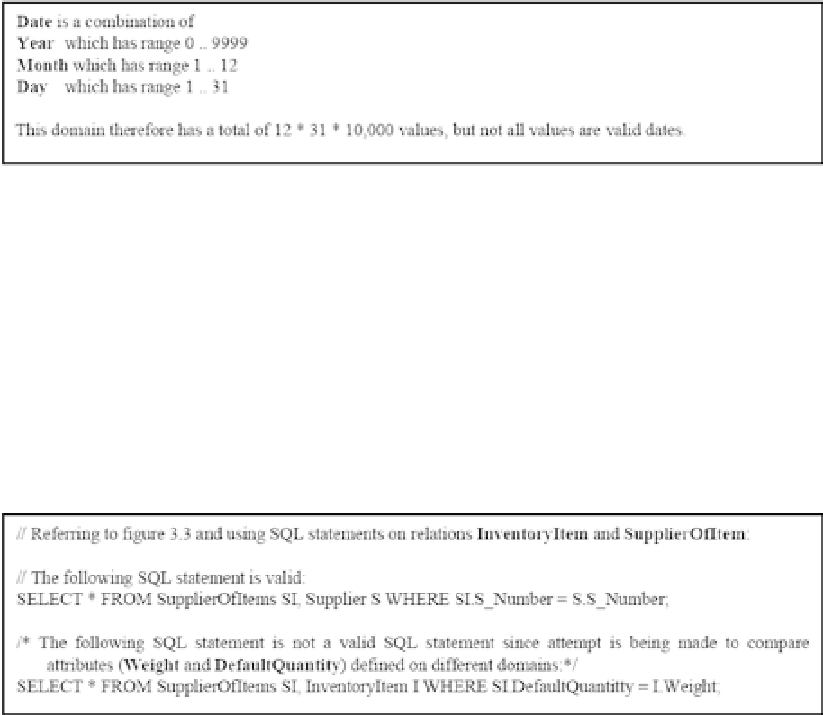Database Reference
In-Depth Information
A
composite domain
is a combination of simple domains. Whether a composite
domain is used or is replaced by its constituent simple domains, is a design decision that
should follow thoughtful consideration.
Example 1:
Date is an excellent illustration of a composite domain, as explained below:
There can therefore be composite attributes. Composite domains are analogous
to Pascal records and C++ structures. Few systems support composite domains and
composite attributes.
Significance of Domains
An understanding of domains is critical for the following reason: If attributes of different
relations (entities) come from the same domain, then comparisons can be made;
otherwise, comparisons are meaningless.
Example 2:
The following illustrations should emphasize the importance of domains:
3.3 Relations
A relation R on a collection of domains D1, D2, . . . Dn
(
not necessarily distinct
)
consists
of two parts — a
heading
and a
body
.
The heading consists of a fixed set of attributes, or more precisely,
attribute-domain pairs,
{(A1:D1), (A2:D2), . . . (An:Dn)}
such that each attribute corresponds to exactly one domain and n is the degree
of the relation. Another term used to describe the heading of a relation is the
predicate
of
the relation.

